C.E.C DAC DX 71 MK2
April 2009
CEC entered into my life some time around 1996 when I read a rave
review in Stereophile about the CEC
TL-1 transport. At 5000 bucks a
piece - it was not cheap, BUT - the price was justified by the fact
that they used a belt transmission between spindle and motor. It must
have been some offspring of NASA secret lab's r&d, wow, to
use a
belt! What a genius idea. Obviously - the use of a direct drive or gear
- is terrible. My washing machine is an offspring of the CEC genius and
it uses the belt too to a great success. I mean - it washes like
everybody get out.
Seriously speaking - the belt idea came from turntables, where anybody
claiming to be serious engineer by definition had to use a belt. The
amount of vibration which a large motor makes does get transmitted to
the stylus which picks the vibrations like the rumble. But in CD - I
dunno. Laser does not rumble. So many players play well without
the belt - that maybe the
trick is just subconscious marketing rather than solid engineering. I
have no way of finding out other than empirical. SO I will be patient
until the CEC TL1x falls into my hands. It is just a question of time.
Anyway - back to the price issue - I am sure that the basic 20 dollar
mechanism plus a rubber band was well worth the price tag. At least
people were ready to pay for it, hence the waiting list for the TL-1.
Same sanyo mechanism with CEC rubber band had been also the heart
of a sister line-up from Parasound. (I think they were Canadians).
I remember that there used to be a cost no object variant of TL-1
named TL-Zero. It was a taxation method for the rich, removing the
disposable income from the pockets of wealthy audiophiles. I remember
the first time I saw it "live" I nearly fainted. It was super
sexy. As the blong one said in Forman's HAIR - I would not throw the
TL-0 out of bed (referring of course to Mick Jager) I think that
Shanling company chef designer must have had
wet dreams about the CEC TL-0. The resemblance is so obvious.
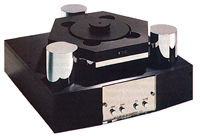 TL-0
TL-0
You can read a very informative story HERE
But the belt transports are NOT the subject of this article. The DAC
is. Obviously CEC people realized an easy job, a low hanging fruit -
the possibility to add a DAC line to their very popular line of
transports. The market was just there - waiting.
Enter the C.E.C DAC DX 71 MK2
I am afraid, that CEC failed to come up with a sexy and unique
""thing" about their DACs to match the rubber belt story. The DACs seem
to look ordinary, normal and unexciting, that's of course before I
listen. Thats just my subjective marketing impression - I am not
impressed.
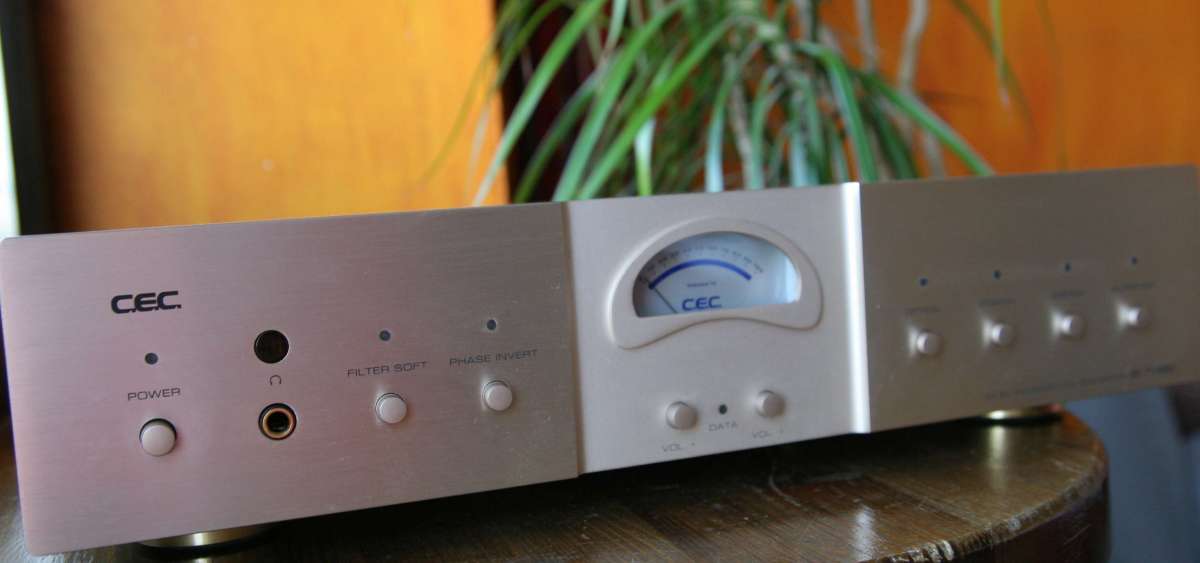
At the first sight - the DAC looks like a kind of nice one. Nothing
special, just an OK box, ok steel hood, okay face plate, and a gimmick
- analog volume indicator. Not typical VU meter showing the momentary
volume, but the level of amplification indicator, showing - how loud
the setting is on the analog variable output stage. Sort of - an
expensive way of replacing the volume knob with the "hour mark" on it.
That is cool, it looks nostalgic and makes sense, but it is still
nowhere
near the match for the belt !!!
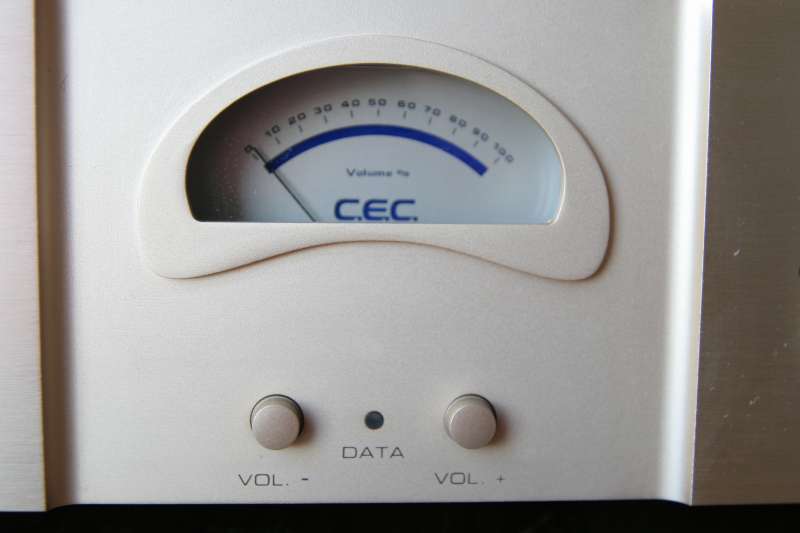
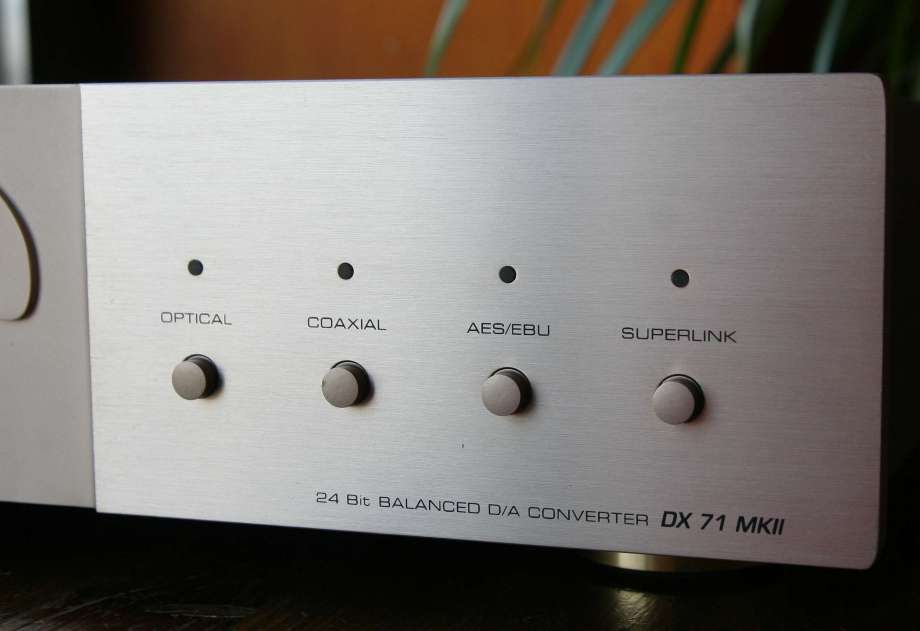
If you ask me, I think the belt transport should be mated to the tubed
dac. Or at least - give it a tubed power supply, But nooo, they are not
that brave.
Under the hood - we find an impressive arrangement of guts. More than I
expected in fact.
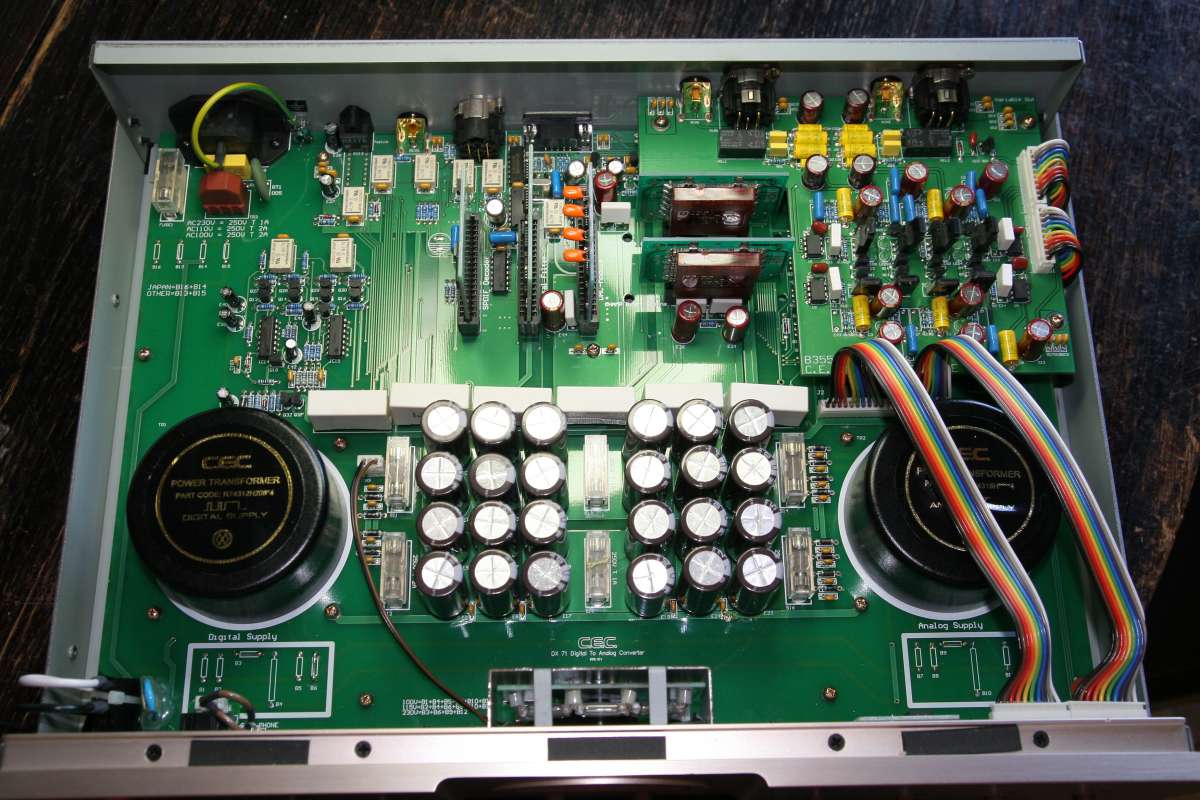
Now lets be more technical for a moment and describe the philosophy of
CEC designer: The philosophy has two distinct features:
1. The use of plugiin modules
2. The use of regulators in a fashion where the pre regulation raw
supply is MASSIVE, just gigantic, and all distribution of
power is RAW
supply, where the miniature SMD regulators are located in the closest
possible proximity of the consumer. The caps after regulation
are
mostly miniaturized SMD tantalums.
Opposite philosophy had been used for example by Philips and Revox -
the raw supply was small and lousy, the massive row of heatsinked
regulators were added immediately after one cap of raw filter, and the
regulated supply had to travel over looong lines to the consumers. Just
the opposite way of thinking.
Personally I like CEC approach better. Sony uses the compromise
method, but closer to CEC than to Philips.
On the photo above you can see the inside, with two 60 VA toroidal
transformers, a couple of rows of large electrolytes, some fuses and
all the stuff we need to have big UNREGULATED supply - together - four
rails: +25 and -25 V DC times two - one for digital section, one for
analog. The regulators take it from there. I counted 24
electrolytes of 2 000 uF each - thats more than my ARG mono block amps
have and the dac consumes just MILIAMPS !
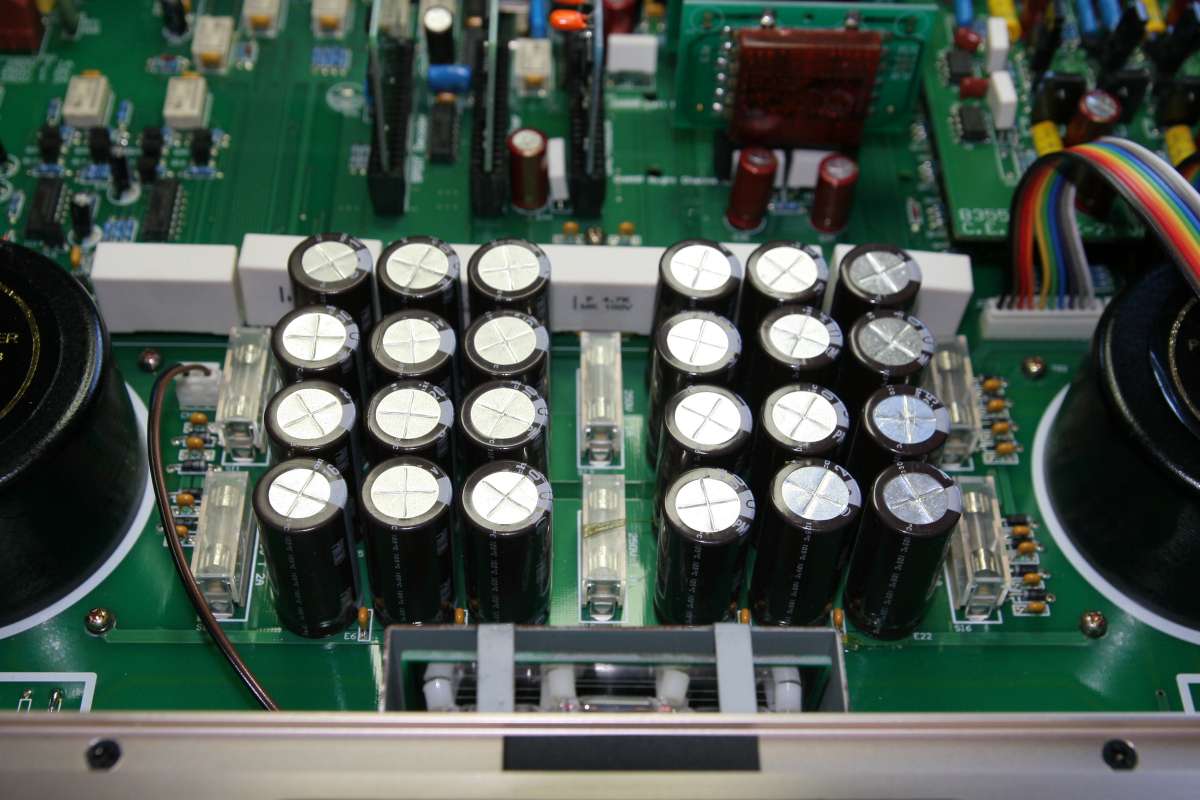
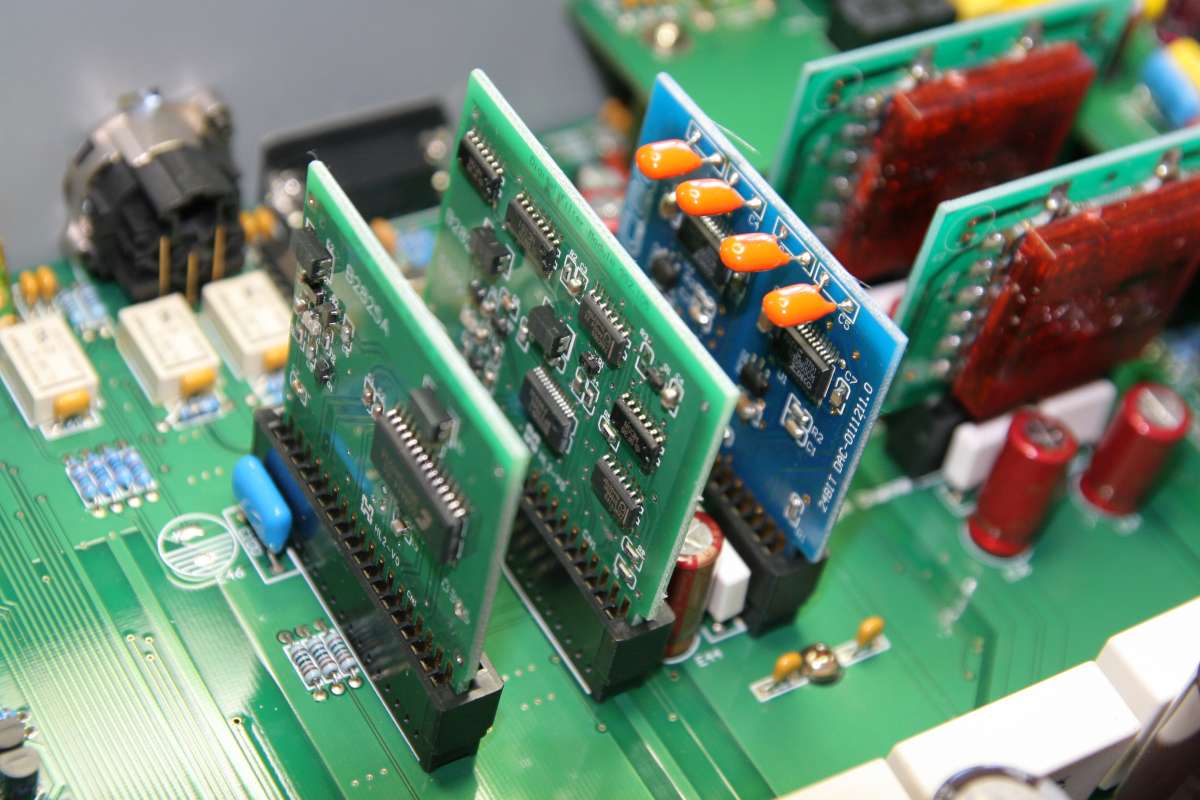
Going back to modular approach: CEC created what we can call a BASE
with this enormous power supplies and a couple of slot connectors. All
functionality is plugged as modules:
from left to right:
1. SP/DIF receiver with Cirrus Logic CS8416 receiver
2. Digital filter section with oversampling and burr brown DF1704 chip
3. DAC with balanced arrangement of Nippon Precision NPC DACs SM5865
(to be found ONLY in other cec products, at least on Vasili's list)
4 and 5: Two dual analog output stages with discrete components
(covered and concealed by plastic so I cant analyze them).
And the rest is - the end part of the analog output - filtering,
muting, decoupling and sockets. The unit has both RCA single
ended outputs and XLR balanced ones. Balancing is honest and true - not
artificially "created" by opamps or transformers. This is the ONLY
proper way of going balanced , the way which makes sense to me.
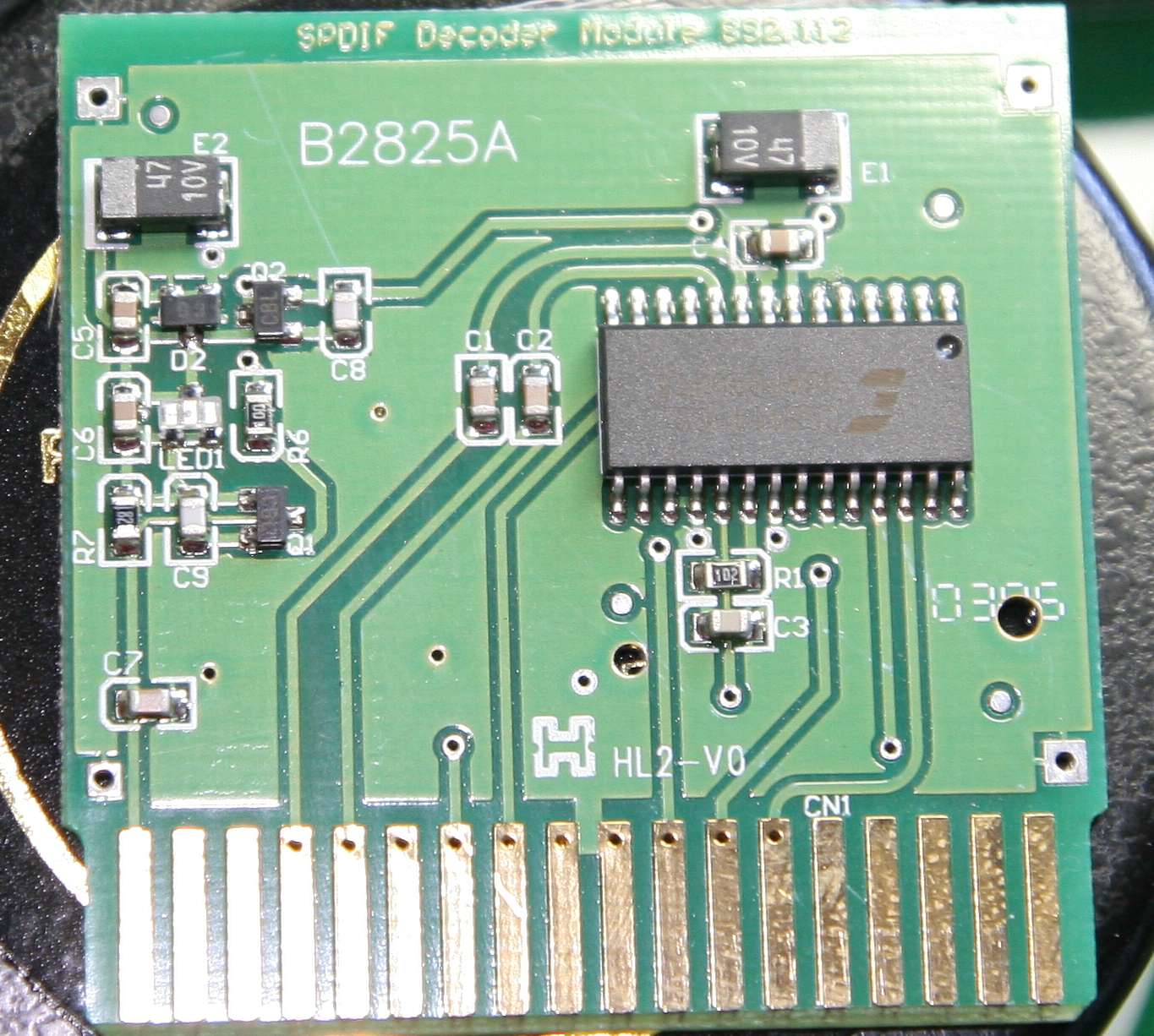
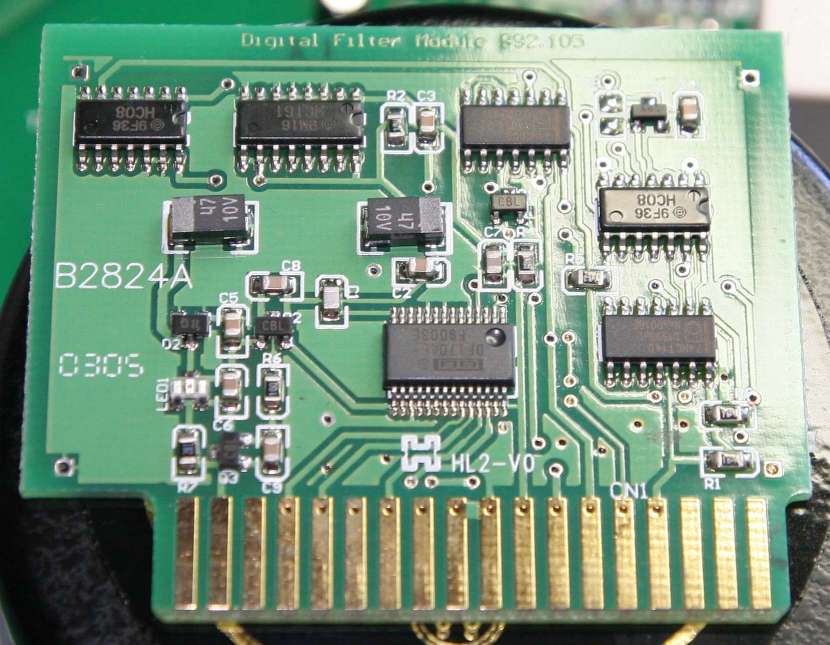
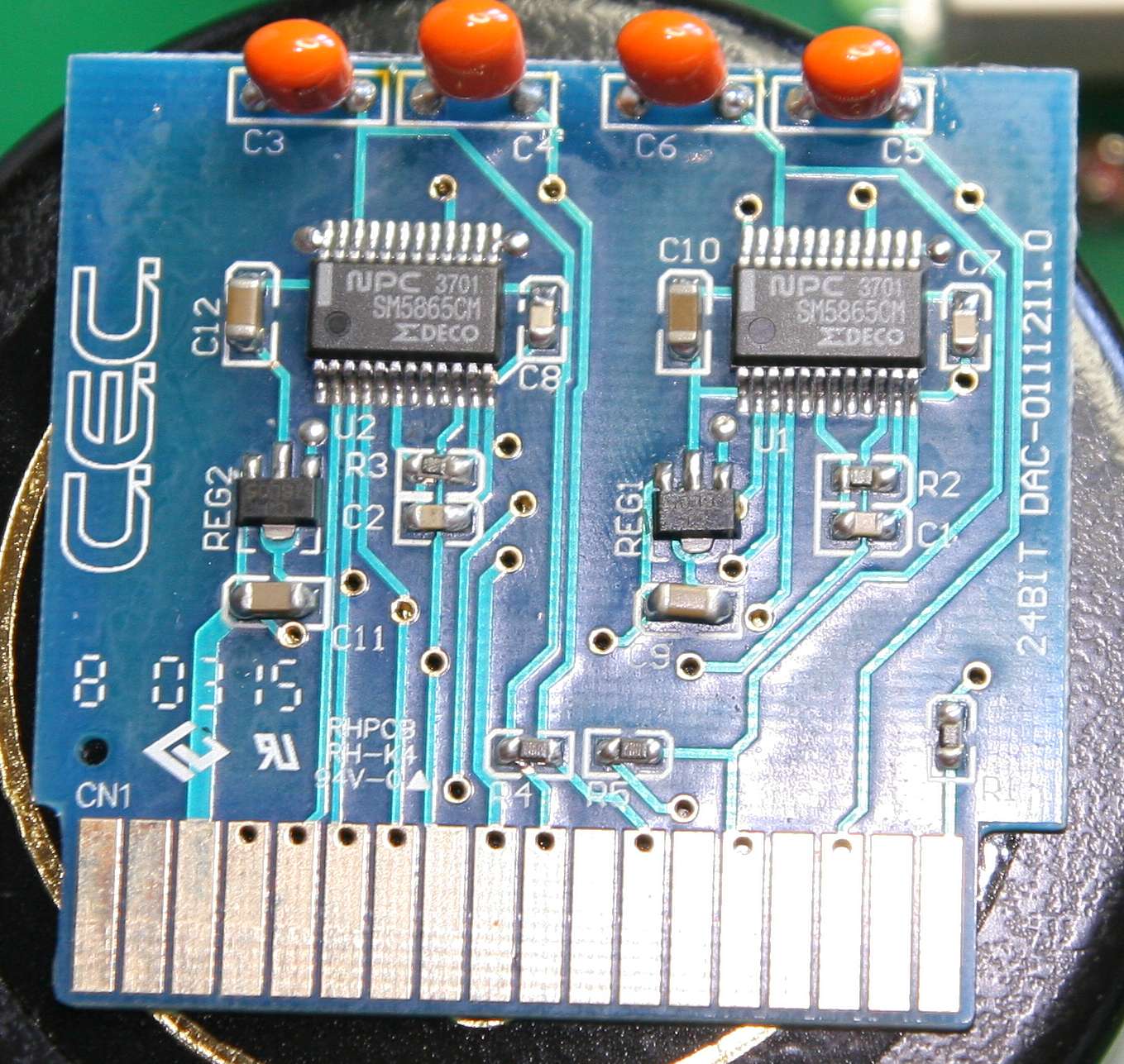
Note above the regulators (described reg1 and reg2)
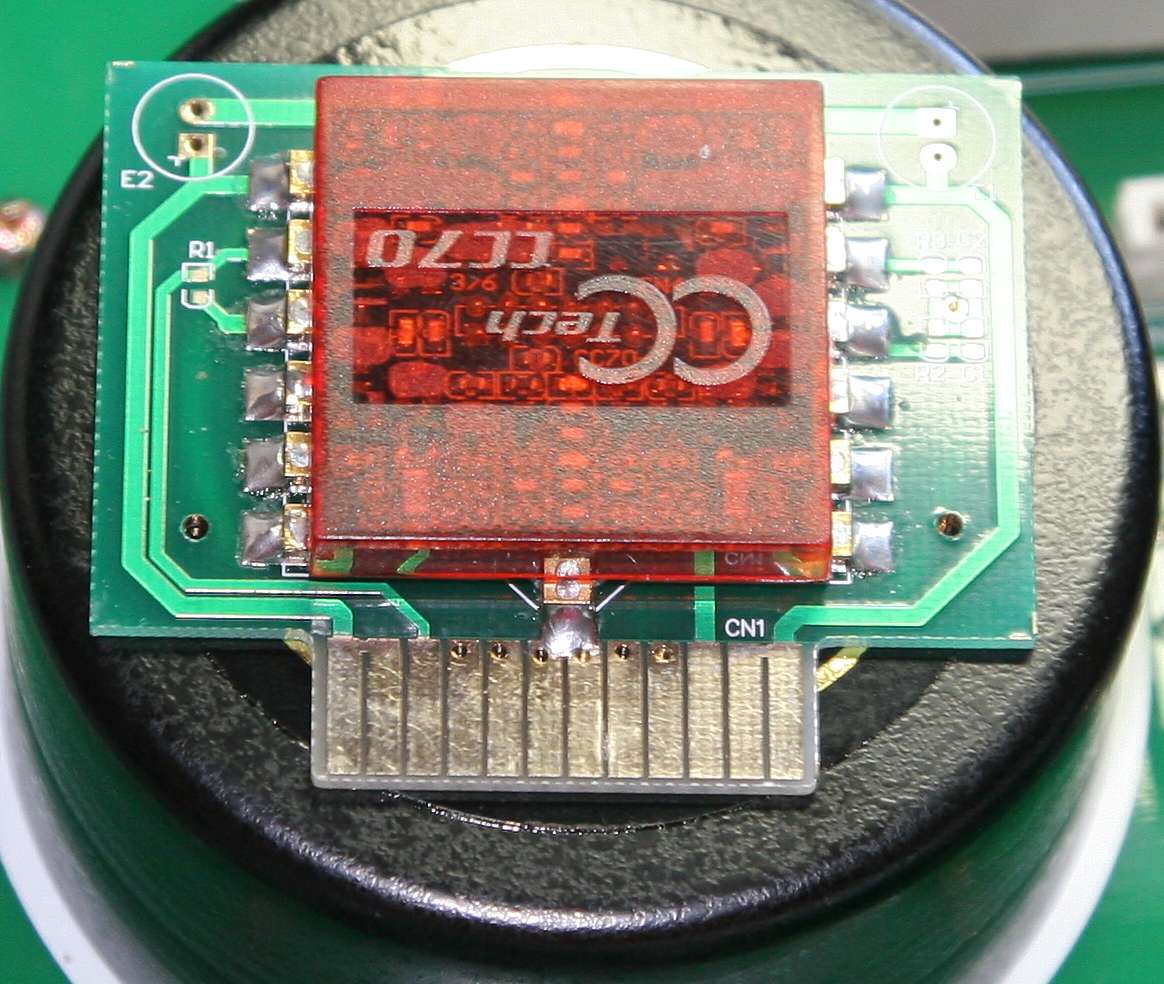
On top of that, CEC added additional preamp board which picks the
signal from the end of its journey and directs it to volume adjusting
board. This is controlled by the remote so it is very convenient and
allows us to use power amps without volume. The analog section degrades
the sound because it is additional to the normal stage but at least we
can omit it completely.
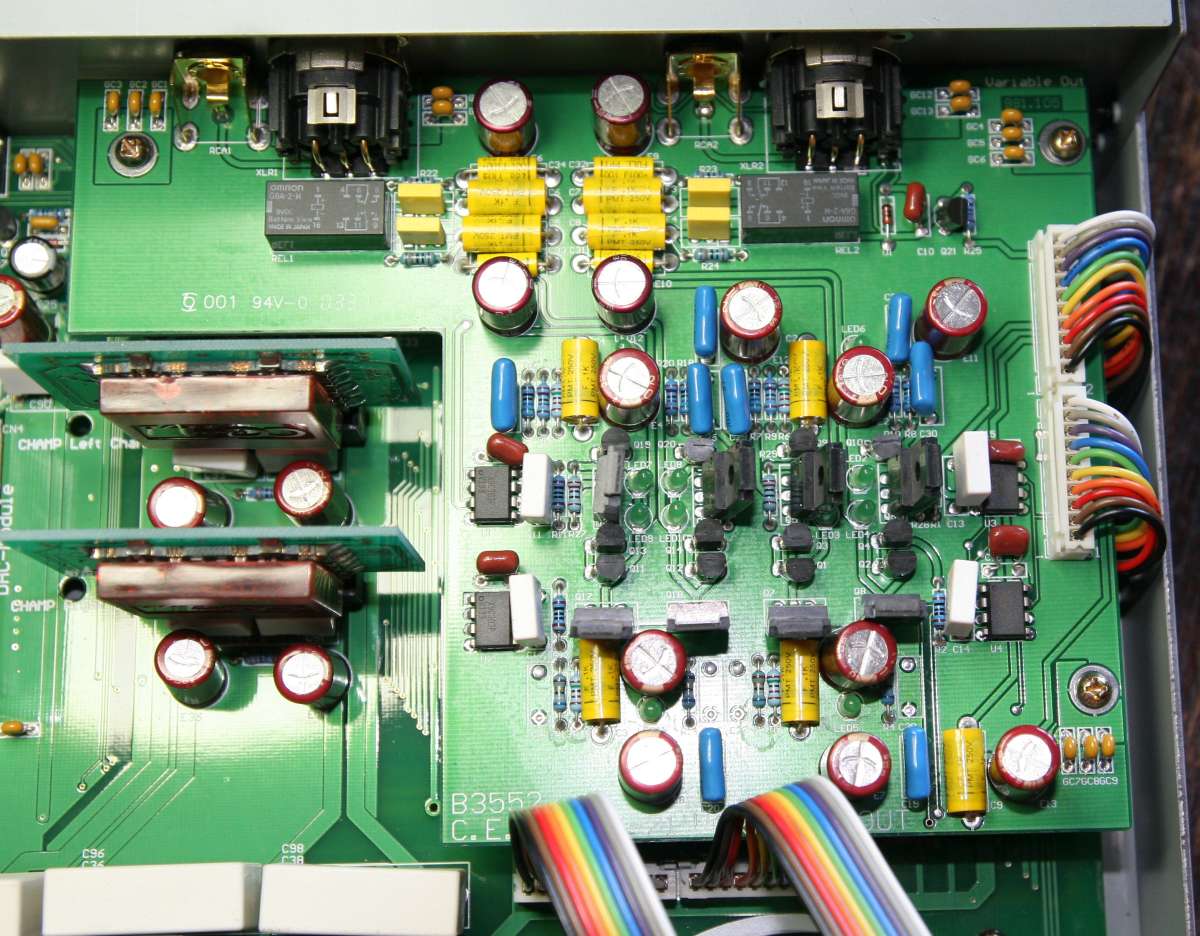
The above photo shows a large green PCB which is L shaped and it has
volume control, leading to VARIABLE outputs. The volume is adjusted in
the silicone domain, not by motorized pot and not by a row of
relays/resistoirs but at thye same time NOT an integrated chip either.
Just a discrete solution, I have never seen before.
The modular approach potentially allows us to replace the modules,
shall something better arrive, a new format, new dac, new
technology. I stress the word potentially,
because when one module broke - the official distributor in Poland told
the owner to go stuff himself. No parts or modules were offered.
We had to get them in other way.
I was told, that on top of the NPC dacs - there is an option with
wolfsons or burr browns - but I haven't verified that.
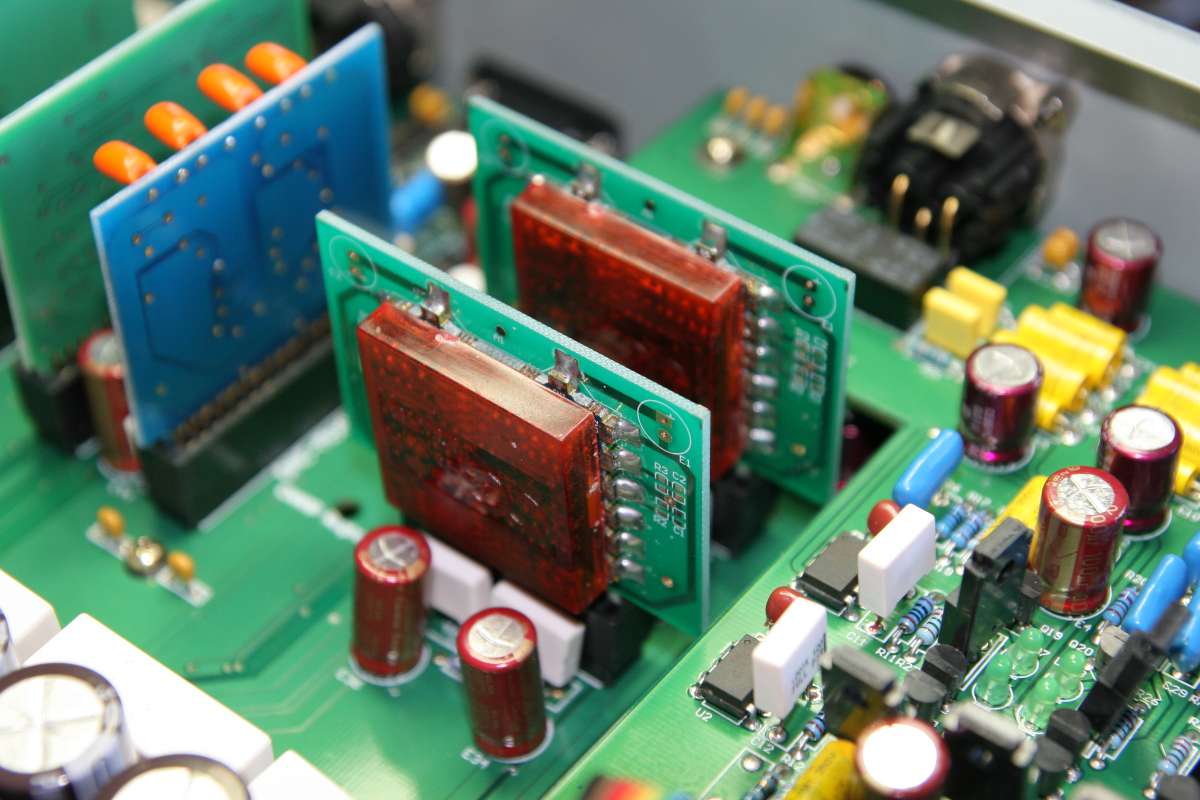
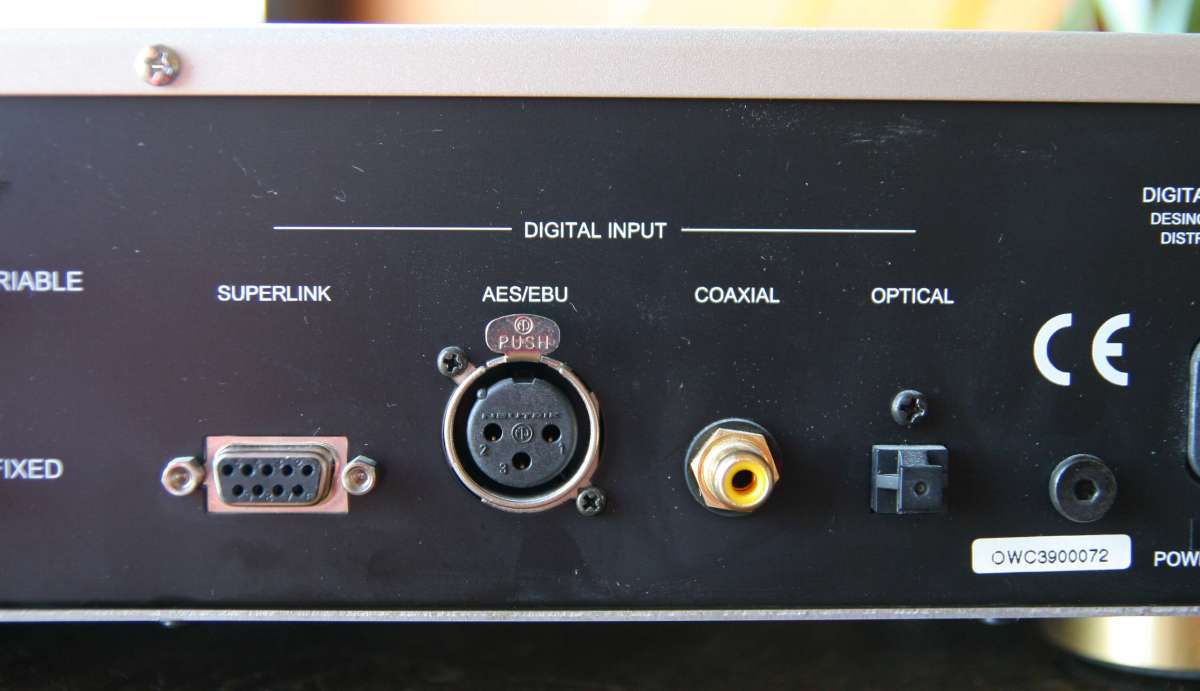
I guess that superlink is I2S link.
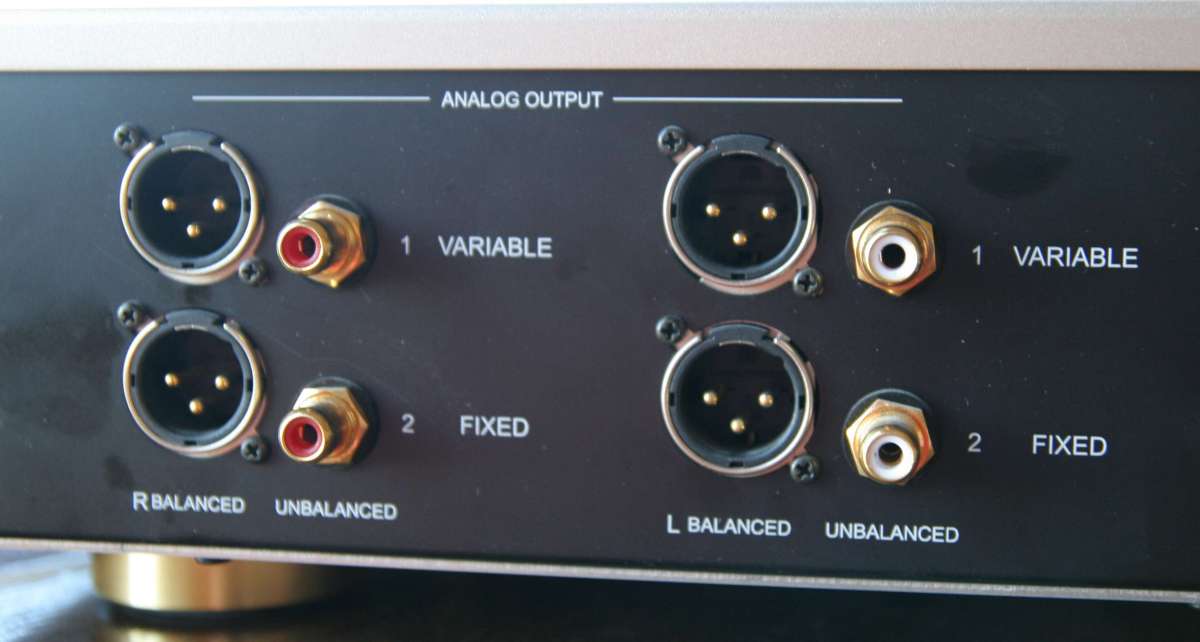
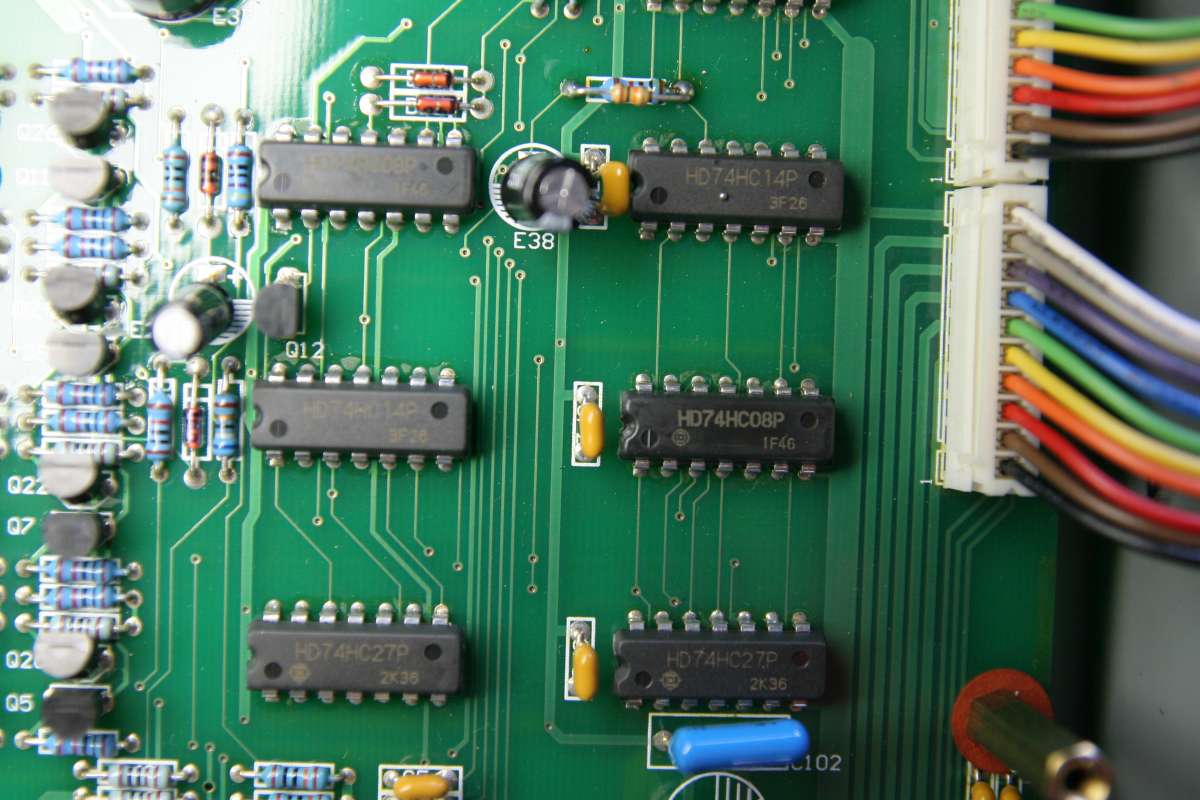
There is a whole bunch of chips near the analog outputs - which role I
havent figured out yet. I just make an assumption - they dont "ADD"
anything interesting to the sound.
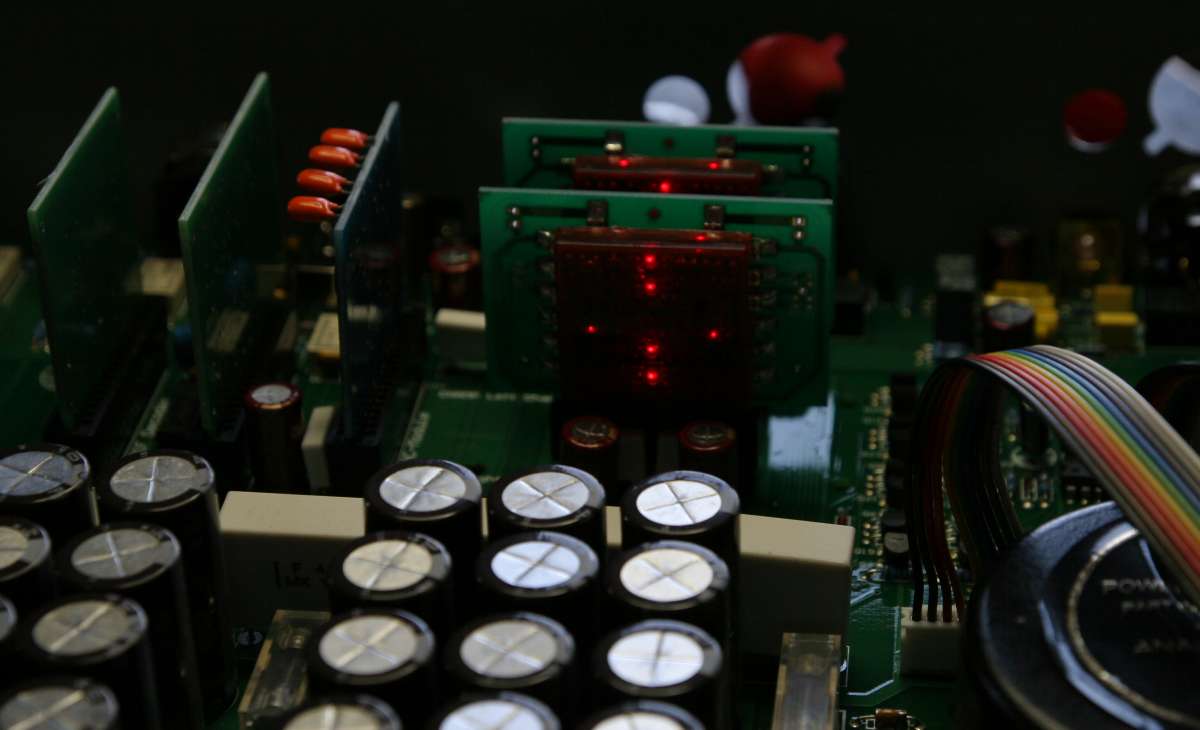
The LEDs under the masking covers of their TOOP SECRET analog
amplifiers are nicely glowing. At least some of them, because one LED
was not lit in one channel and some voltage was missing.
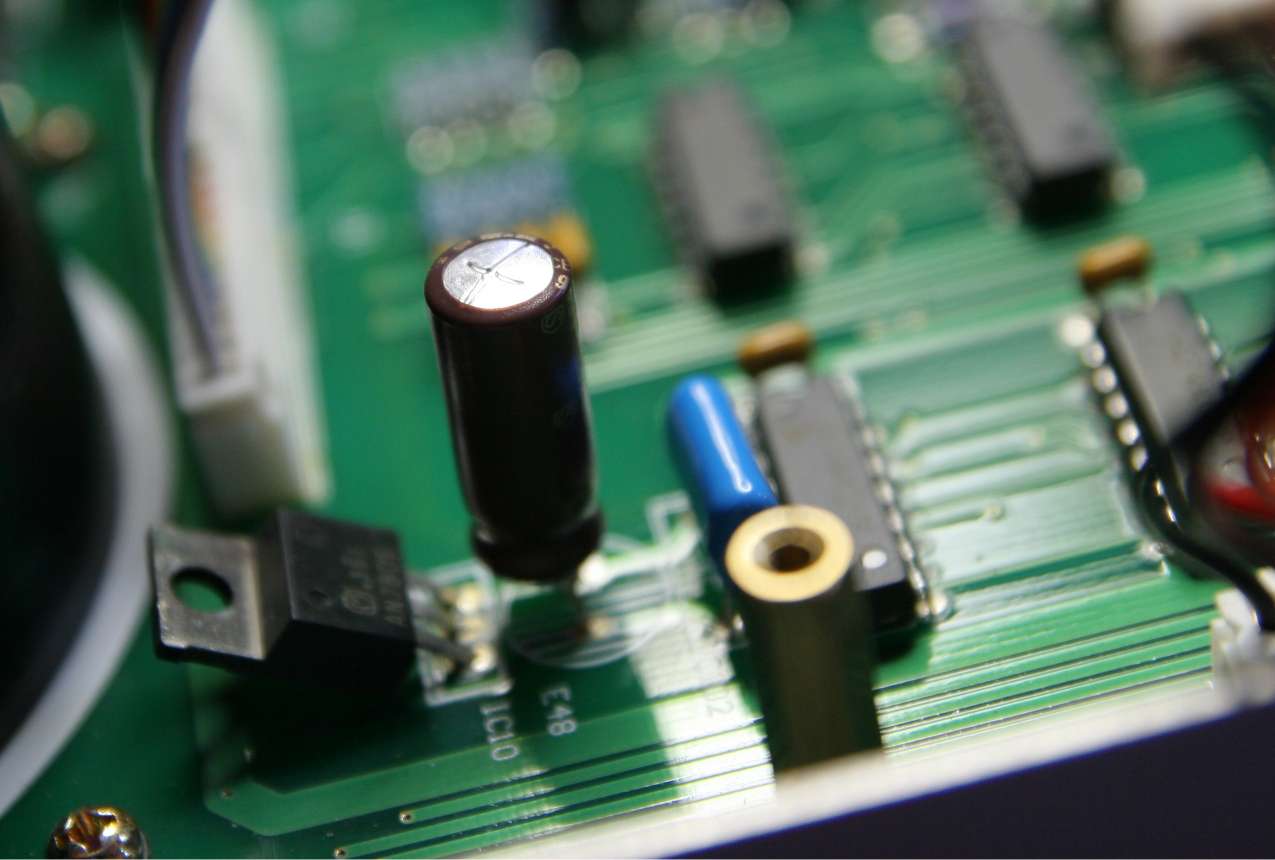
Ooooops I caught CEC to have mounted an electrolyte - the wrong way
around. It was close to exploding - hence the deformed top lid of the
cap.
Sound of the cec dac.
After serious sniffing inside for the whole evening - that's
before listening - I was not happy about that DAC. The AMOUNT OF
CIRCUITRY after DACS seemed far to big for my taste. Forget the output
preamp - even the direct output signal must be "seeing" over a hundred
of parts - very complicated for what could have been done easier. So I
was not expecting an impressively clean sound that I am used to.
And guess what - I was exactly right. The DAC hooked to my Fikus
Transport 1,0 played OKAY, just as it looks. A solid piece, with
pretension to upper middle class, the wannabie - yes -but wannabie WHAT
? Not wannabie audio note, rather wannabie levinson. They completely
ignored not only tubes, but all the NOS thing, all the passive
component thing, the current DAC output thing - and they built rather a
highendish SMD PC SOUNDCARD kind of product.
I mean I am okay with that, it plays at least better than typical
opamped products, but it fails to move me. I tried 2 - 3 songs and I
returned to the CD player which was standing by - the lampized Philips
CD-304 mk2. Man did it mop the floor with the CEC ! I think,
that lampized CEC would have been something exciting, but I will not
check it - the owner decided to sell it asap. Especially after he heard
it being used as a mop again by the Lampucera 40 USD dac hooked to 140
GBP of sowter transformers on the output. Not even tubed.
You cant go wrong with this DAC, it is a safe buy, very high
marks for not using opamps, but it is not impressively musical and
the money would be much better spent elsewhere.
I am not so sure about the reliability issue - wouldn't you call one
damaged output line, one broken down dac card, one reversed electrolyte
- in a brand new product - a bit too much ? I would. Especially
for a company with a "service with attitude".
Hey mister CEC - you could do better than that ! No amount of rubber
belt transport up-front can make this DAC be musical enough. And
the upgrade by changing the plug in modules will not improve this
product because its weakness is in fact it's over engineered output
stage which will anyway mask all differences between different DAC
chips or digital receivers.
 TL-0
TL-0















